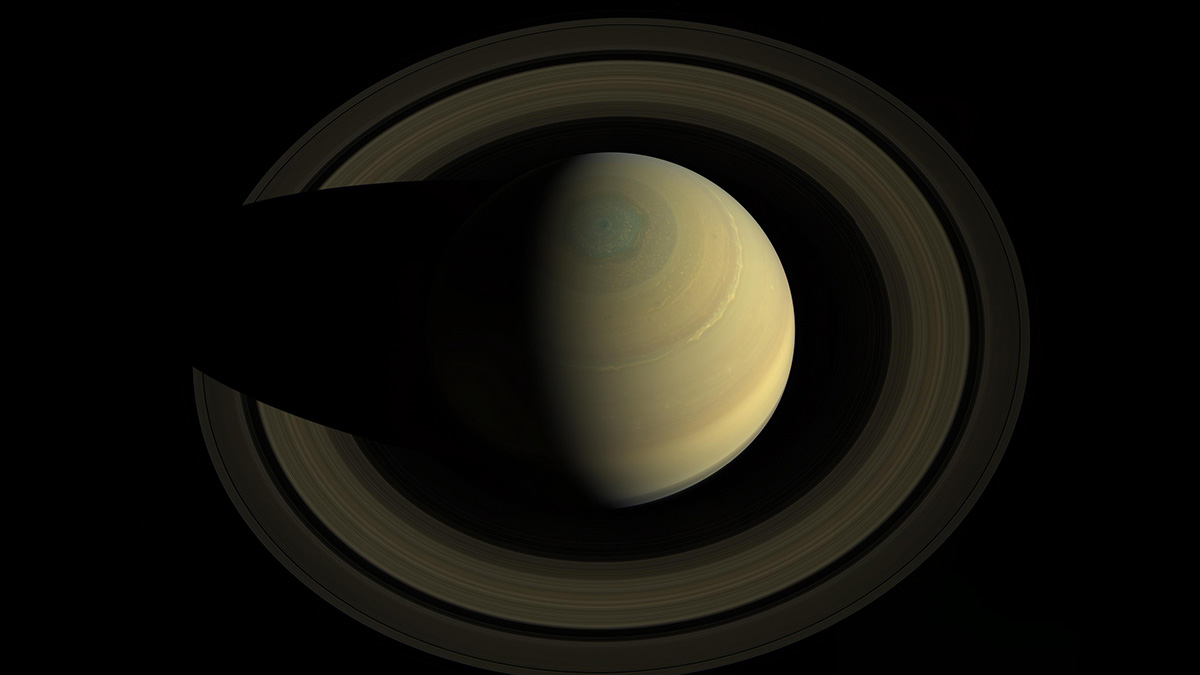See Saturn's rings in glorious detail in stunning new composite image
The image was taken by NASA's Cassini mission, which plunged to its death in Saturn's atmosphere in 2017.

Scientists from the Southwest Research Institute (SwRI) have created a new composite image of the sixth planet of the solar system comprising 41 observations by NASA's retired Cassini mission. The team plans to use the image to study Saturn's rings, the origins of which remain a mystery.
The Cassini mission might have plunged to its death in the atmosphere of Saturn in 2017, but scientists still continue to study its data to learn more about the ringed gas giant planet. Despite Cassini's 13 years of detailed observations of the Saturn system, astronomers still know very little about the origins of the planet's trademark rings.
"Evidence indicates that the rings are relatively young and could have formed from the destruction of an icy satellite or a comet," SwRI researcher Stephanie Jarmak said in a statement. "However, to support any one origin theory, we need to have a good idea of the size of particles making up the rings."
Related: Saturn may have destroyed one of its moons to make its rings
That's where Cassini’s images come in. All 41 were taken during solar occultations, which occur when a planet crosses between an observer — Cassini, in this case — and the sun. Using its Ultraviolet Imaging Spectrograph (UVIS), Cassini took numerous highly-detailed backlit images of the rings. Because the tiny particles that make up the rings block the sun's light, scientists can measure their so-called optical depth. Optical depth is a measure of how a material absorbs light, and scientists can use it to determine the particles' size and composition.
"Given the wavelength of the light coming from the sun, these observations gave us insight into the smallest particle sizes with Saturn’s rings," said Jarmak. "UVIS can detect dust particles at the micron level, helping us understand the origin, collisional activity and destruction of the ring particles within the system."
Any information gleaned from the composite image of Saturn could not only help solve the mystery of its rings' origins, but also teach researchers more about the physical properties of our solar system.
Breaking space news, the latest updates on rocket launches, skywatching events and more!
"These particles are thought to result from objects colliding and forming in a disk and building up larger particles," said Jarmak. "Understanding how they form, these ring systems could help us understand how planets form as well."
The image has recently been published in the journal Icarus.
Follow Stefanie Waldek on Twitter @StefanieWaldek. Follow us on Twitter @Spacedotcom and on Facebook.

Space.com contributing writer Stefanie Waldek is a self-taught space nerd and aviation geek who is passionate about all things spaceflight and astronomy. With a background in travel and design journalism, as well as a Bachelor of Arts degree from New York University, she specializes in the budding space tourism industry and Earth-based astrotourism. In her free time, you can find her watching rocket launches or looking up at the stars, wondering what is out there. Learn more about her work at www.stefaniewaldek.com.
